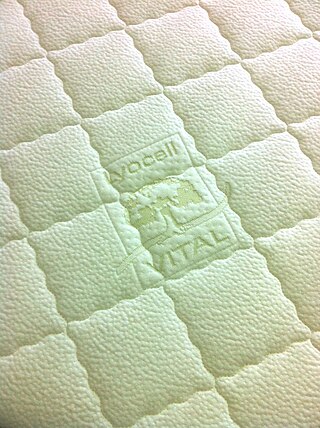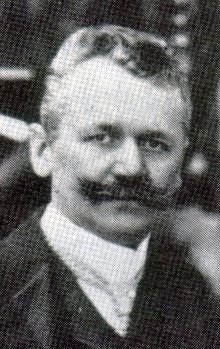

American Viscose Corporation was an American division of the British firm Courtaulds, which manufactured rayon and other synthetic fibres. The company operated from 1910 to 1976 when it was renamed Avtex. Avtex closed in 1990.


American Viscose Corporation was an American division of the British firm Courtaulds, which manufactured rayon and other synthetic fibres. The company operated from 1910 to 1976 when it was renamed Avtex. Avtex closed in 1990.

Established in 1909, it became the largest supplier of rayon and the first company to make artificial silk in the United States.
American Viscose had plants at Marcus Hook, Pennsylvania (established 1910), Roanoke, Virginia (1916), Lewistown, Pennsylvania (1920), Parkersburg, West Virginia (1927), Meadville, Pennsylvania (1929), Nitro, West Virginia, [1] and Front Royal, Virginia (1940). [2] After a 1946 merger with Sylvania Industrial Corporation (not to be confused with lighting and electronics manufacturer Sylvania), it gained a plant at Fredericksburg, Virginia. [3]
The company was founded by Samuel Agar Salvage, as a division of Courtaulds and began production as "The American Viscose Corporation-(AVC)" in 1910. Later it was branded as "Crown Rayon". In 1941, to purchase supplies for the War, the British government were pressured by the U.S. Government to sell the company to 152 American investment firms in a deal led by Morgan, Stanley & Co. and Dillion, Reed & Co. The 228,480 shares were sold to the public. In 1949, The company passed into the control of the Monsanto Corporation. (Courtaulds resumed manufacture of rayon in the United States in 1952, at a new plant in Axis, Alabama). [4] In 1963 it was purchased by FMC Corporation. In 1974 the plant in Parkersburg, West Virginia was closed. FMC sold off the division in 1976 to its employees, when it was renamed Avtex Fibers.
AVC also extended their reach to television station ownership, purchasing majority control of five construction permits from Daniel H. Overmyer in 1967 in exchange for a $3 million loan. [5] [6] AVC formed U.S. Communications, Inc., to operate these unbuilt stations along with WPHL-TV in Philadelphia, which was concurrently purchased from separate interests. [7] [8] Four of the five permits signed on the air, [9] but three of the five left the air in 1971; [10] all were eventually sold by 1972. [11]
In 1980 Avtex Fibers closed their plant in Nitro, West Virginia that manufactured rayon staple. In 1983, Avtex Fibers was the largest US manufacturer of rayon fiber, as well as operating plants that made polyester and acetate yarn. [12]
Many of its closed plants have become Superfund pollution cleanup sites. The former plant site at Front Royal, Virginia was used for manufacturing from 1940 until 1989, when the plant was closed after being cited for more than 2,000 environmental violations over five years, including emissions of polychlorinated biphenyls (PCBs) into the nearby Shenandoah River. [13] [14] The plant was demolished in 1997, [15] and is being restored by FMC in conjunction with the United States Environmental Protection Agency. [2]
The company made rayon fiber for fabric and also rayon cord for reinforcement of pneumatic automobile tires. Declining sales and high internal costs caused Avtex to close its rayon operations in 1988, briefly restarting to produce fiber for the aerospace industry, and then permanently closing in 1990 for economic and environmental reasons.

Lewistown is a borough in and the county seat of Mifflin County, Pennsylvania, United States. It is the principal city of the Lewistown, PA Micropolitan Statistical Area, which encompasses all of Mifflin County. It lies along the Juniata River, 61 miles (98 km) northwest of Harrisburg.

Front Royal is the only incorporated town in Warren County, Virginia, United States. The population was 15,011 at the 2020 census. It is the county seat of Warren County.

Cellophane is a thin, transparent sheet made of regenerated cellulose. Its low permeability to air, oils, greases, bacteria, and liquid water makes it useful for food packaging. Cellophane is highly permeable to water vapour, but may be coated with nitrocellulose lacquer to prevent this.

Rayon, also called viscose and commercialised in some countries as sabra silk or cactus silk, is a semi-synthetic fiber, made from natural sources of regenerated cellulose, such as wood and related agricultural products. It has the same molecular structure as cellulose. Many types and grades of viscose fibers and films exist. Some imitate the feel and texture of natural fibers such as silk, wool, cotton, and linen. The types that resemble silk are often called artificial silk. It can be woven or knit to make textiles for clothing and other purposes.
Synthetic fibers or synthetic fibres are fibers made by humans through chemical synthesis, as opposed to natural fibers that are directly derived from living organisms, such as plants or fur from animals. They are the result of extensive research by scientists to replicate naturally occurring animal and plant fibers. In general, synthetic fibers are created by extruding fiber-forming materials through spinnerets, forming a fiber. These are called synthetic or artificial fibers. The word polymer comes from a Greek prefix "poly" which means "many" and suffix "mer" which means "single units"..

Lyocell is a semi-synthetic fiber used to make textiles for clothing and other purposes. It is a form of regenerated cellulose made by dissolving pulp and dry jet-wet spinning. Unlike rayon; which is made by the more common viscose processes, Lyocell production does not use carbon disulfide, which is toxic to workers and the environment. Lyocell was originally trademarked as Tencel in 1982.

WATL is a television station in Atlanta, Georgia, United States, affiliated with MyNetworkTV. It is owned by Tegna Inc. alongside NBC affiliate WXIA-TV. The two stations share studios at One Monroe Place on the north end of midtown Atlanta. WATL's transmitter shares a broadcast tower with several other local stations near North Druid Hills, just northeast of the city.

The United Network, known prior to launch as the Overmyer Network, was a short lived attempt at a fourth television network in the United States that operated through the month of May 1967. Founded by Daniel H. Overmyer, a Toledo, Ohio, warehouse chain operator and television station owner, majority control of the network was sold by Overmyer to a 14-person syndicate weeks before it launched, resulting in the name change to the United Network.

WNWO-TV is a television station in Toledo, Ohio, United States, affiliated with NBC. Owned by Sinclair Broadcast Group, the station maintains a transmitter facility on Cousino Road in Jerusalem Township. Its studios are located on South Byrne Road in Toledo.

WPGH-TV is a television station in Pittsburgh, Pennsylvania, United States, affiliated with the Fox network. It is owned by Sinclair Broadcast Group alongside dual CW and MyNetworkTV affiliate WPNT. The two stations share studios on Ivory Avenue in the city's Summer Hill neighborhood, where WPGH-TV's transmitter is also located.
FMC Corporation is an American chemical manufacturing company headquartered in Philadelphia, Pennsylvania, which originated as an insecticide producer in 1883 and later diversified into other industries. In 1941 at the beginning of US involvement in WWII, the company received a contract to design and build amphibious tracked landing vehicles for the United States Department of War, and afterwards the company continued to diversify its products. FMC employs 7,000 people worldwide, and had gross revenues of US$4.7 billion in 2018.
Courtaulds was a United Kingdom-based manufacturer of fabric, clothing, artificial fibres, and chemicals. It was established in 1794 and became the world's leading man-made fibre production company before being broken up in 1990 into Courtaulds plc and Courtaulds Textiles Ltd.

Bamboo textile is any cloth, yarn or clothing made from bamboo fibres. While historically used only for structural elements, such as bustles and the ribs of corsets, in recent years different technologies have been developed that allow bamboo fibre to be used for a wide range of textile and fashion applications.

The American Enka Company was an American company that was the nation's largest rayon fiber manufacturer. Founded in 1928, its research division developed such things as Tyrex, improved rayon and nylon, and by-products for detergent makers and paper mills. It helped bolster the economies of Western North Carolina, West Virginia, Eastern Kentucky, Eastern Tennessee, Northern Georgia and Northern Alabama during the Great Depression and thereafter; its founding in 1928 by Dutch capital led the way for German, Swiss, and British investments in the American South, and it was one of the companies on the original Fortune 500 list.
Ketchikan Pulp Company was a pulp mill located on the north shore of Ward Cove, 5 miles (8.0 km) from Ketchikan, in the U.S. state of Alaska. Owned by Louisiana-Pacific, it operated between 1954 and 1997. It was the last pulp mill to operate in the state.

Daniel Harrison Overmyer was an American businessman, warehouse mogul, and television broadcaster. During the height of his career, Overmyer was referred to as "the king of warehousing".

Vereinigte Glanzstoff-Fabriken was a German manufacturer of artificial fiber founded in 1899 that became one of the leading European producers of rayon.

Max Fremery was a German chemist and industrialist. He was one of the founders of the Vereinigte Glanzstoff-Fabriken (VGF) in 1899. VGF became a major manufacturer of artificial fibers.

J. P. Bemberg was a German rayon manufacturer that produced an unusually fine artificial fiber which became known as Bemberg®. J. P. Bemberg came under the control of Vereinigte Glanzstoff-Fabriken and eventually disappeared after a series of mergers and divestitures, but Bemberg™ rayon was still being produced in 2015 by Asahi in Japan,

The American Viscose Plant Historic District is an industrial park and historic district located in Roanoke, Virginia. The site is the location of the former American Viscose Corporation rayon processing plant that once employed over 5,000 and for a time was reportedly the largest rayon producing mill in the world. The plant's construction began in 1916 with the building of the first of what became three large processing plants of two spinning units each; the second began construction in 1921 and the third in 1925. With the plant's viability decreased by newer facilities elsewhere and rayon's usage supplanted by nylon and other synthetic fabrics, the factory closed in 1958. The property was purchased by an assortment of Roanoke investors in 1961 and has been operated as an industrial park since.